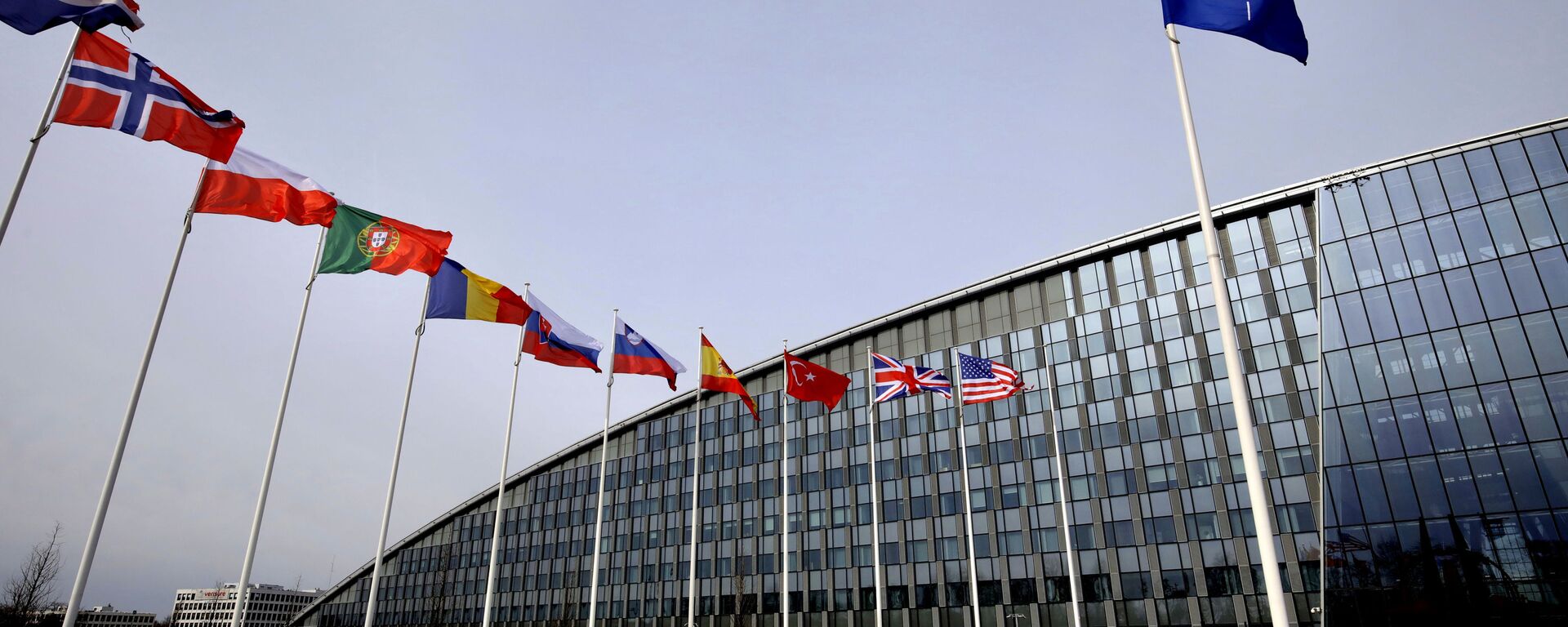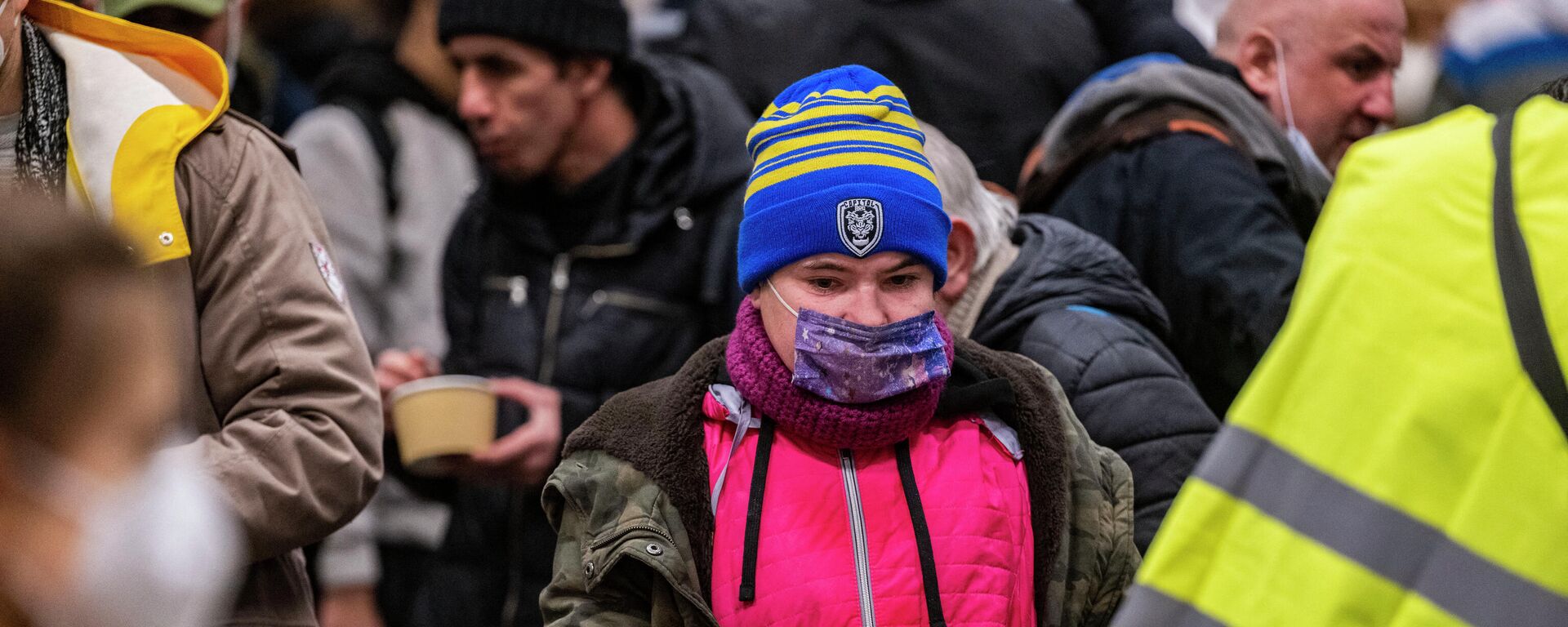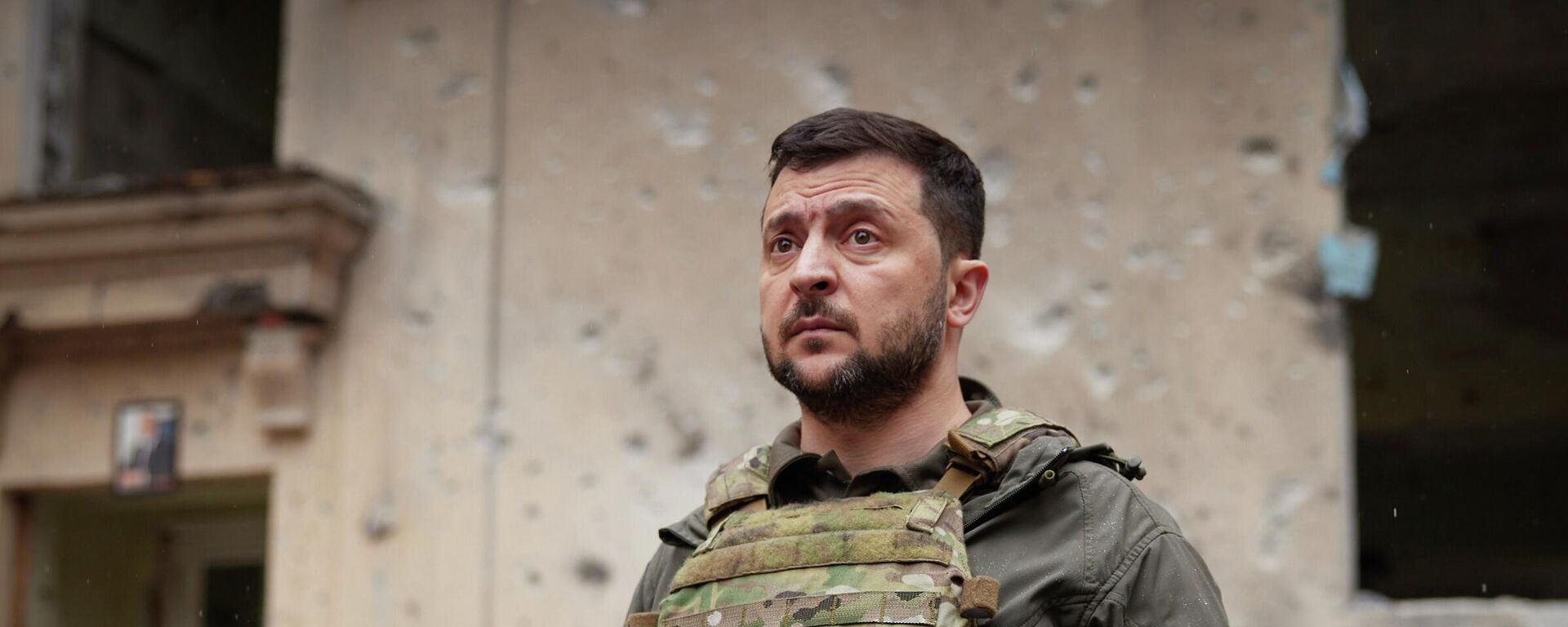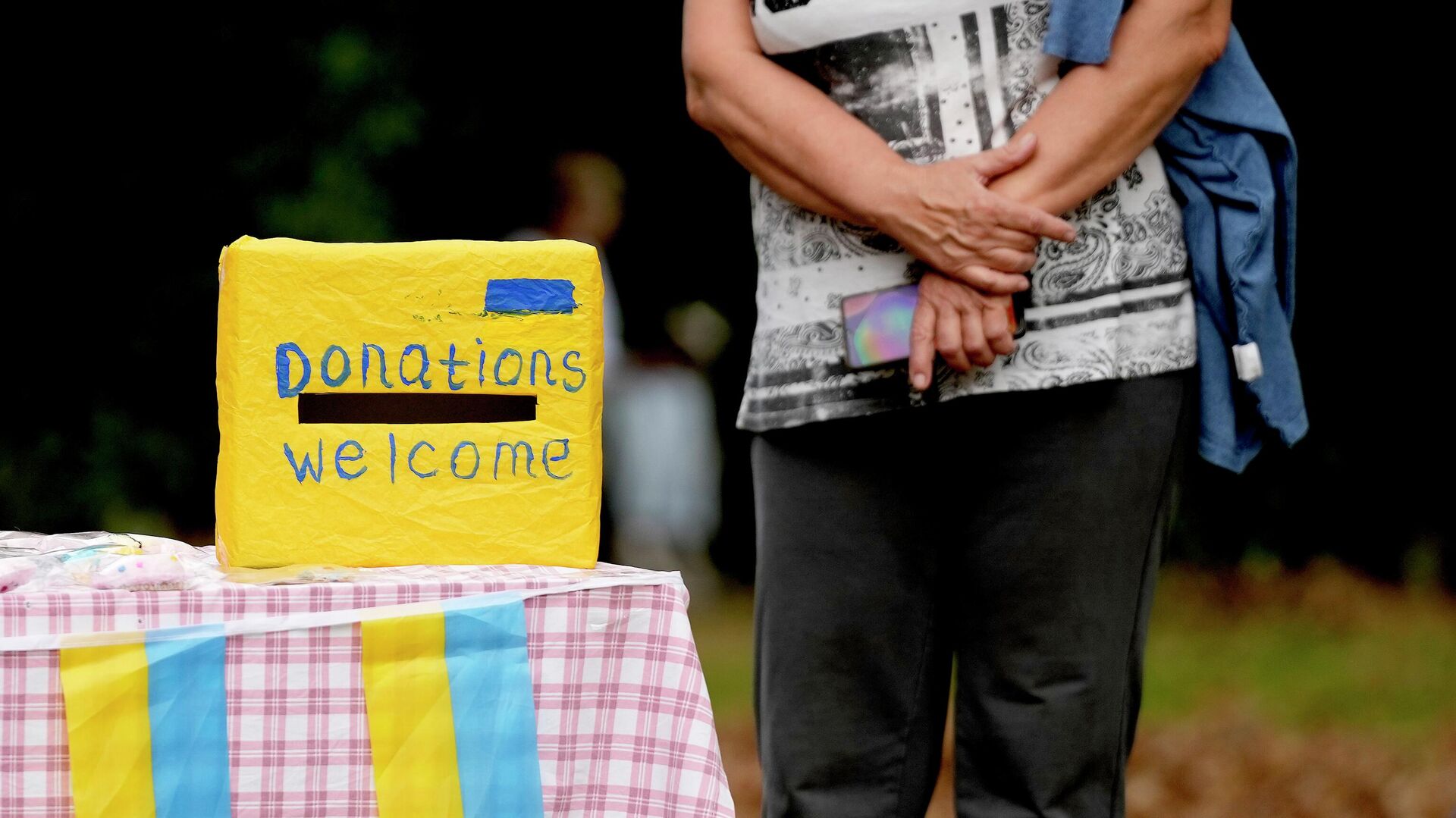https://sputnikglobe.com/20221124/how-europe-created-its-latest-refugee-crisis-1104664158.html
How Europe Created Its Latest Refugee Crisis
How Europe Created Its Latest Refugee Crisis
Sputnik International
Europe has found itself amid a new refugee crisis, which, some argue, is worse than that of 2015, when 1.3 million asylum seekers from Middle Eastern war zones... 24.11.2022, Sputnik International
2022-11-24T17:04+0000
2022-11-24T17:04+0000
2023-04-12T17:15+0000
sputnik explains
europe
ukraine
migration
asylum seekers
germany
poland
special operation
migrant crisis
european union (eu)
https://cdn1.img.sputnikglobe.com/img/07e6/09/14/1101002423_0:161:3071:1888_1920x0_80_0_0_eb3d385bc7278dffe9c897d998ddf5c0.jpg
More than 7.8 million Ukrainian refugees have been recorded across Europe, with 4.7 million registered for temporary protection schemes, according to the United Nations High Commissioner for Refugees (UNHCR). This comes in addition to over 365,000 first-time asylum applicants, most of whom are fleeing war-torn Syria and Afghanistan. What's more, refugee figures for 2022 could reach up to 9.6 million under the recently recalibrated Refugee Response Plan.The Old Continent faced a sharp increase in migrant influx from 2021 in the aftermath of the COVID pandemic: in January and August 2021, an estimated 97,000 refugees and migrants arrived in Europe, representing a 95% hike compared to the same period in 2020. As a result, in August 2021, accommodation centers across Europe hosted over 655,000 refugees and migrants. Between January and March 2022, approximately 26,700 asylum seekers from Afghanistan, Iraq, Pakistan, and Syria entered Europe alongside 303,400 Ukrainian refugees fleeing the conflict.The Russian special operation in the neighboring Eastern Europe country started on February 24 after the US and NATO refused to guarantee Ukraine's non-admission to the transatlantic military bloc and refused to demilitarize the area adjusted to the Russian border. As documents obtained by the Russian Ministry of Defense in the course of the special operation indicate, Moscow managed to hijack the Ukrainian Armed Force's advance on the Donetsk and Lugansk People's Republics planned in clear defiance of the 2015 Minsk Agreements.By the end of March, Russia and Ukraine reached a preliminary peace deal mediated by the Turkish leadership in Istanbul which was followed by the voluntary pull-out of the Russian military from the Kiev region. However, the Kiev government abruptly backpedaled on the deal, being promised substantial military aid by the UK, EU and US leaderships. On April 9, EU foreign policy chief Josep Borrell declared on Twitter that the Russo-Ukrainian conflict should be "won on the battlefield" and pledged an additional €500 million in weapons for Kiev. For his part, US Secretary of Defense Lloyd Austin made it clear on April 25 that Washington wanted to see Russia weakened to the degree that it can't resort to any military action. Thus, the military standoff continued, bringing the number of Ukrainian applicants of refugee programs to over seven million from 303,400 in the beginning of March.EU Resettlement PlanIn late March, EU interior ministers set out a ten-point plan to aid in resettling Ukrainians which included creating an EU-wide registration system for Ukrainian refugees as well as improving transport coordination to help newcomers move between EU member states. The bloc rolled out the Temporary Protection program for Ukrainian refugees, which ensured the right to work, health, education, shelter, and financial support for up to three years.Most Ukrainian refugees were taken in by Poland (1.5 million) and Germany (1 million); then came the Czech Republic (463,000); Italy (173,000); Spain (154,000); the UK (145,000); France (119,000); Slovakia (101,000); Romania (92,000); and Austria (87,000).Some European states came under criticism over the preferential treatment of Ukrainians (who are predominantly white) which placed them at the front of the queue for refugee services and housing, leaving asylum-seekers from other countries at a distinct disadvantage. Previously, asylum seekers from the Middle East, Africa, and Afghanistan were met with pushback in Poland, Italy, Greece, and beyond.Nonetheless, given that the influx of Ukrainian and other refugees keeps increasing, cracks have started to appear within the EU's resettlement system.German cities are either converting gyms and auditoriums to accommodate more refugees or signaling that their cities would not accept any more newcomers. The Association of German Cities and Towns has sounded the alarm as Germany's accommodation centers are all full to bursting.For their part, Poles are complaining that they don't have the resources to sustain the initial scale of hospitality: the existing capacity of the Polish housing market, education system, and other essential services is not enough to meet the needs of Ukrainian refugees. In the UK, a total of 1,915 Ukrainian households from the Homes for Ukraine and Ukraine Family schemes have become homeless between February and September 2022.In Brussels, asylum seekers have ended up sheltering in cardboard boxes and tents. In the Netherlands, a three-month-old baby died at a registration center for asylum seekers.Costs of Refugee CrisisThe situation is exacerbated by the unfolding energy crunch, swirling inflation, plummeting living standards and a looming recession in the Eurozone. Euro area annual inflation reached 10.6% in October 2022, up from 9.9% in September.In March 2022, the Center for Global Development (CGD), a Washington-based non-profit, suggested that hosting Ukrainian refugees could cost nations around the world an estimated $30 billion in the first year alone. The analysis used the United Nations High Commissioner for Refugee’s initial projection that there could be four million Ukrainian refugees. Given that the overall refugee figures for 2022 have been recently revised by the UN upwards of 9.6 million, one could easily imagine what a burden Europe currently bears.According to the Kiel Institute, for some nations, the cost of housing Ukrainian refugees has exceeded their overall aid to Ukraine. For instance, Estonia is spending more than 1.2% of its GDP on aid to Kiev and housing Ukrainian refugees. Latvia and Poland's cumulative aid also exceeds 1% of their GDP.Refugee Crisis of 2015The European media forecasts an internal spat, akin to the one which unfolded during the 2015/2016 refugee crisis in Europe, over burden-sharing within the union. Meanwhile, the Austrian government has already come under pressure from the anti-immigrant opposition; Italian Prime Minister Giorgia Meloni has dubbed unchecked irregular migration as nothing short of a "threat" to her country; and the UK press has reported that Chancellor Jeremy Hunt is considering reducing funding for refugee schemes as inflation increases.In 2015, the refugee crisis engulfed Europe as 1.3 million people came to the Old Continent to request asylum in the wake of the US/NATO wars in Iraq, Syria, Libya and Afghanistan. Most asylum seekers were taken by Germany while Sweden took more refugees per capita than any other European country. According to the official statistics, 806,155 newcomers were awarded residencies in Sweden between 2013 and 2018, i.e. almost 10% of the entire population. The migrant flow from the Middle East and Northern African (MENA) region continued in the following years. The European Commission's financial report on the implementation of funding for the migration and refugee crisis and its aftermath between 2015 and 2020 indicated that roughly €40 billion was committed for migration funding.The refugee crisis seriously affected the economy of the host municipalities, and some sectors blamed migrants for more generalized rising crime rate, sexual abuse and rape, and social disturbances. The attempts of Brussels and Berlin to force other states to share the burden of accommodating refugees led to the EU's conflicts with the Visegrád Group comprising the Czech Republic, Hungary, Poland, and Slovakia, and, according to some observers, fanned Brexit sentiments.More Arms to Ukraine Means More RefugeesEuropeans have grown weary of the unfolding refugee crisis which is manifesting itself in waning volunteer aid, refusals to accommodate refugees, and sporadic demonstrations across the Old Continent. Earlier this month, Italians took to the streets urging the EU leadership to stop sending weapons to the Ukrainian military and facilitate peace talks between Moscow and Kiev. The longer the conflict rages and the more resources Europe is forced to spend on hosting, accommodating and integrating Ukrainian refugees. Meanwhile, the US, UK, EU and some of their allies have already committed a total of €93.73 billion to Ukraine, including €41.5 billion in lethal arms. By continuing to fan the flames of the conflict, the West, and Brussels in particular, aggravate the unfolding refugee crisis in the Old Continent.
https://sputnikglobe.com/20220915/only-neutral-status-will-provide-real-security-guarantees-to-ukraine-moscow-says-1100802758.html
https://sputnikglobe.com/20221122/why-is-west-eager-to-give-ukrainians-billions-worth-of-weapons-but-not-refugee-benefits-1104557861.html
https://sputnikglobe.com/20221031/end-of-the-lvov-affair-europe-tires-of-ukrainian-refugees--1102865634.html
https://sputnikglobe.com/20221111/we-have-had-enough-why-western-leaders-populations-call-for-halting-money-flow-to-ukraine-1104025789.html
https://sputnikglobe.com/20191130/how-swedish-professors-life-was-destroyed-over-raising-migrant-gang-rape-issue-on-twitter-1077434596.html
ukraine
germany
poland
Sputnik International
feedback@sputniknews.com
+74956456601
MIA „Rossiya Segodnya“
2022
News
en_EN
Sputnik International
feedback@sputniknews.com
+74956456601
MIA „Rossiya Segodnya“
Sputnik International
feedback@sputniknews.com
+74956456601
MIA „Rossiya Segodnya“
eu refugee crisis, ukrainians, asylum seekers, inflation, recession, accomodation centers, protests in europe, poland, germany, temporary protection
eu refugee crisis, ukrainians, asylum seekers, inflation, recession, accomodation centers, protests in europe, poland, germany, temporary protection
How Europe Created Its Latest Refugee Crisis
17:04 GMT 24.11.2022 (Updated: 17:15 GMT 12.04.2023) Europe has found itself amid a new refugee crisis, which, some argue, is worse than that of 2015, when 1.3 million asylum seekers from Middle Eastern war zones arrived.
More than 7.8 million Ukrainian refugees have been recorded across Europe, with 4.7 million registered for temporary protection schemes,
according to the United Nations High Commissioner for Refugees (UNHCR).
This comes in addition to over 365,000 first-time asylum applicants, most of whom are fleeing war-torn Syria and Afghanistan. What's more, refugee figures for 2022 could reach up to 9.6 million
under the recently recalibrated Refugee Response Plan.
The Old Continent faced a sharp increase in migrant influx from 2021 in the aftermath of the COVID pandemic: in January and August 2021, an estimated 97,000 refugees and migrants arrived in Europe, representing a
95% hike compared to the same period in 2020.
As a result, in August 2021, accommodation centers across Europe hosted over 655,000 refugees and migrants. Between January and March 2022, approximately 26,700 asylum seekers from Afghanistan, Iraq, Pakistan, and Syria
entered Europe alongside 303,400 Ukrainian refugees fleeing the conflict.

15 September 2022, 10:06 GMT
The Russian special operation in the neighboring Eastern Europe country started on February 24 after the US and NATO refused to guarantee Ukraine's non-admission to the transatlantic military bloc and refused to demilitarize the area adjusted to the Russian border.
As documents obtained by the Russian Ministry of Defense in the course of the special operation indicate, Moscow managed to hijack the Ukrainian Armed Force's advance on the Donetsk and Lugansk People's Republics planned in clear defiance of the 2015 Minsk Agreements.
By the end of March, Russia and Ukraine reached a preliminary peace deal mediated by the Turkish leadership in Istanbul which was followed by the voluntary pull-out of the Russian military from the Kiev region. However, the Kiev government abruptly backpedaled on the deal, being promised substantial military aid by the UK, EU and US leaderships.
On April 9, EU foreign policy chief Josep Borrell declared on Twitter that the Russo-Ukrainian conflict should be "won on the battlefield" and pledged an additional €500 million in weapons for Kiev. For his part, US Secretary of Defense Lloyd Austin made it clear on April 25 that Washington wanted to see Russia weakened to the degree that it can't resort to any military action. Thus, the military standoff continued, bringing the number of Ukrainian applicants of refugee programs to over seven million from 303,400 in the beginning of March.

22 November 2022, 17:41 GMT
In late March, EU interior ministers set out a ten-point plan to aid in resettling Ukrainians which included creating an EU-wide registration system for Ukrainian refugees as well as improving transport coordination to help newcomers move between EU member states. The bloc rolled out the Temporary Protection program for Ukrainian refugees, which ensured the right to work, health, education, shelter, and financial support for up to three years.
Most Ukrainian refugees were taken in by Poland (1.5 million) and Germany (1 million); then came the Czech Republic (463,000); Italy (173,000); Spain (154,000); the UK (145,000); France (119,000); Slovakia (101,000); Romania (92,000); and Austria (87,000).
Some European states came under criticism over the preferential treatment of Ukrainians (who are predominantly white) which placed them at the front of the queue for refugee services and housing, leaving asylum-seekers from other countries at a distinct disadvantage. Previously, asylum seekers from the Middle East, Africa, and Afghanistan were met with pushback in Poland, Italy, Greece, and beyond.
Nonetheless, given that the influx of Ukrainian and other refugees keeps increasing, cracks have started to appear within the EU's resettlement system.
German cities are either converting gyms and auditoriums to accommodate more refugees or signaling that their cities would not accept any more newcomers. The Association of German Cities and Towns has sounded the alarm as Germany's accommodation centers are all full to bursting.
For their part, Poles are complaining that they don't have the resources to sustain the initial scale of hospitality: the existing capacity of the Polish housing market, education system, and other essential services is not enough to meet the needs of Ukrainian refugees. In the UK,
a total of 1,915 Ukrainian households from the Homes for Ukraine and Ukraine Family schemes have become homeless between February and September 2022.
In Brussels, asylum seekers have ended up sheltering in cardboard boxes and tents. In the Netherlands, a three-month-old baby died at a registration center for asylum seekers.

31 October 2022, 16:53 GMT
The situation is exacerbated by the unfolding energy crunch, swirling inflation, plummeting living standards and a looming recession in the Eurozone. Euro area annual inflation reached 10.6% in October 2022, up from 9.9% in September.
In March 2022, the Center for Global Development (CGD), a Washington-based non-profit,
suggested that hosting Ukrainian refugees could cost nations around the world an estimated $30 billion in the first year alone. The analysis used the United Nations High Commissioner for Refugee’s initial projection that there could be four million Ukrainian refugees. Given that the overall refugee figures for 2022 have been recently revised by the UN upwards of 9.6 million, one could easily imagine what a burden Europe currently bears.
According to the Kiel Institute, for some nations, the cost of housing Ukrainian refugees
has exceeded their overall aid to Ukraine. For instance, Estonia is spending more than 1.2% of its GDP on aid to Kiev and housing Ukrainian refugees. Latvia and Poland's cumulative aid also exceeds 1% of their GDP.

11 November 2022, 14:25 GMT
The European media forecasts an internal spat, akin to the one which unfolded during the 2015/2016 refugee crisis in Europe, over burden-sharing within the union.
Meanwhile, the Austrian government has already come under pressure from the anti-immigrant opposition; Italian Prime Minister Giorgia Meloni has dubbed unchecked irregular migration as nothing short of a "threat" to her country; and the UK press has reported that Chancellor Jeremy Hunt is considering reducing funding for refugee schemes as inflation increases.
In 2015, the refugee crisis engulfed Europe as 1.3 million people came to the Old Continent to request asylum in the wake of the US/NATO wars in Iraq, Syria, Libya and Afghanistan. Most asylum seekers were taken by Germany while Sweden took more refugees per capita than any other European country. According to the official statistics, 806,155 newcomers were awarded residencies in Sweden between 2013 and 2018, i.e. almost 10% of the entire population.
The migrant flow from the Middle East and Northern African (MENA) region continued in the following years. The European Commission's financial report on the implementation of funding for the migration and refugee crisis and its aftermath between 2015 and 2020
indicated that roughly €40 billion was committed for migration funding.
The refugee crisis seriously affected the economy of the host municipalities, and some sectors blamed migrants for more generalized rising
crime rate, sexual abuse and rape, and social disturbances. The attempts of Brussels and Berlin to force other states to share the burden of accommodating refugees led to the EU's conflicts with the Visegrád Group comprising the Czech Republic, Hungary, Poland, and Slovakia, and, according to some observers, fanned Brexit sentiments.

30 November 2019, 09:15 GMT
More Arms to Ukraine Means More Refugees
Europeans have grown weary of the unfolding refugee crisis which is manifesting itself in waning volunteer aid, refusals to accommodate refugees, and sporadic demonstrations across the Old Continent.
Earlier this month, Italians took to the streets urging the EU leadership to stop sending weapons to the Ukrainian military and facilitate peace talks between Moscow and Kiev. The longer the conflict rages and the more resources Europe is forced to spend on hosting, accommodating and integrating Ukrainian refugees.
Meanwhile, the US, UK, EU and some of their allies have already
committed a total of €93.73 billion to Ukraine, including €41.5 billion in lethal arms. By continuing to fan the flames of the conflict, the West, and Brussels in particular, aggravate the unfolding refugee crisis in the Old Continent.






